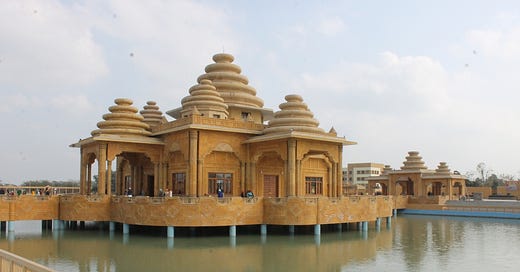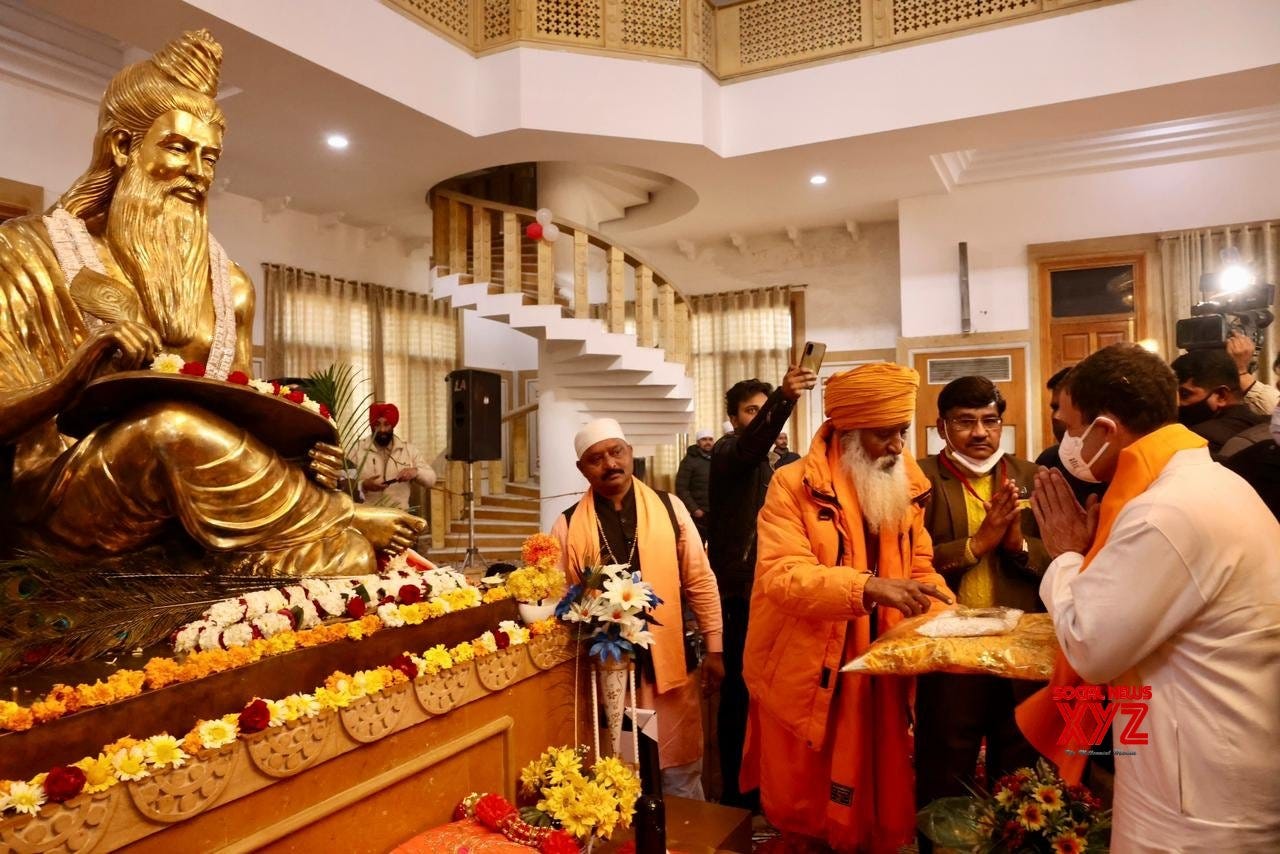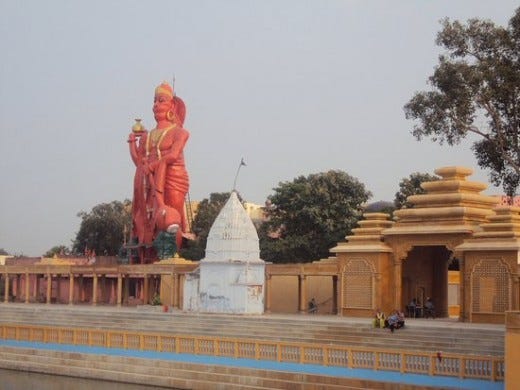Maharishi Valmiki: Reflecting on his Legacy, a day after the Ram Mandir Consecration
A day after the Ayodhya Temple came alive, literally and metaphorically, we write about the great sage, his timeless epic the holy Ramayan and his everlasting legacy.
Maharishi Valmiki: The Sage Behind the Epic, Amidst the Grandeur of the Ram Mandir Consecration
In the wake of the splendid consecration of the Ram Mandir at Ayodhya on 22nd January 2024, we find ourselves not only in awe of the temple's grandeur and the rare, once-in-a-millennium event but also in profound reflection upon the enduring legacy of Maharishi Valmiki. This revered sage, believed to have lived in the Treta Yuga, several thousand years ago according to Hindu cosmology, authored the timeless epic, the Ramayana, in Sanskrit. His divine composition, timeless and resonating through the ages, continues to serve as a spiritual and moral compass that beautifully complements the significance of this historic moment.
The Genius of Maharishi Valmiki and His Magnum Opus
Maharishi Valmiki's magnum opus, the epic Ramayana, stands as an enduring testament to spiritual and ethical ideals, deeply influencing countless generations since it was scribed. Comprising around 24,000 shlokas, the epic is structured into seven distinct Kandas, each illuminating different dimensions of life and spirituality. These Kandas are: the Balakanda, introducing the genealogy of Lord Rama and setting the stage for the journey; Ayodhyakanda, portraying the circumstances leading to Lord Rama's exile; Aranyakanda, depicting the period of exile and encounters with demons; Kishkindhakanda, describing the alliance with Hanuman and the vanaras; Sundarakanda, detailing Hanuman’s journey to Lanka; Yuddhakanda, chronicling the war between Lord Rama and Ravana; and finally Uttarakanda, offering closure and presenting Lord Rama's return to Ayodhya and eventual renunciation.
Maharishi Valmiki’s own transformation from a bandit to an esteemed sage serves as a compelling narrative of spiritual awakening, affirming the notion that opportunities for personal growth and redemption are available to everyone, even during this lifetime.
The Geography and Importance of Valmiki's Ashram
Valmiki's ashram, a haven in the narrative of the Ramayana, holds historical and geographical enigmas. Whether situated near Kanpur in Uttar Pradesh, or Bihar, or elsewhere, many believe that the Ashram near Amritsar in Punjab holds an extraordinary resonance. This sacred sanctuary is often considered the birthplace of Luv and Kush, the twin sons of Lord Rama and Sita, making it not just a geographical but also a spiritual landmark.
A Modern Pilgrimage: Bhagwan Valmiki Tirath Asthan
The Bhagwan Valmiki Tirath Asthan in Amritsar, Punjab, is a key religious and historical site attributed to Maharishi Valmiki. Managed by the Valmiki Tirath Development Board, a quasi-government society, the complex has overcome past management disputes to become a symbol of spiritual unity. Developed with a budget of ₹200 crore, it was inaugurated in December 2016 following the architectural designs by Guru Nanak Dev University's Department of Architecture. The site boasts an 800-kg gold-plated idol of Valmiki, grand entrance portals, a sacred pond, a devotee hall for 5,000 people, a Sanskrit library, a museum, and ample parking space.
This state-of-the-art facility stands as more than just a pilgrimage centre; it's a confluence of ancient spirituality and modern innovation. Beyond serving as a religious focal point, the complex holds significant potential for cultural education and community cohesion. Amidst the backdrop of its storied past and sacred traditions, the site marks a significant stride in Punjab's socio-cultural and spiritual landscape. It embodies the aspirations of a progressive Punjab while paying tribute to its rich religious history.
Cities of Legend: Lahore and Kasur
The cities of Lahore and Kasur, presently in Pakistan, and virtually at a stone’s throw from the spot mentioned above, are traditionally said to have been founded by and named after Luv and Kush respectively, adding a fascinating spiritual layer to the cultural history of these cities, regardless of the paucity of direct historical evidence.
Juxtaposing Valmiki and Tulsidas: Twin Pillars of Spiritual Literature
Valmiki's Ramayana and Tulsidas' Ramcharitmanas are distinct divine masterpieces that should not be conflated, despite both centering on the life of Lord Rama. Each stands as a monumental pillar in the world of spiritual and religious literature, serving unique purposes and emanating from different cultural and temporal contexts. Originating from the 5th to 4th century BCE and written in classical Sanskrit, Valmiki's Ramayana is a pioneering work that delves into the intricate characters and ethical dimensions of its protagonists. The text is composed of seven Kandas, each offering a deep exploration of other characters like Sita, Lakshmana, and Hanuman within the framework of Dharma, or righteous conduct.
In contrast, Tulsidas was not strictly a contemporary of Sri Guru Nanak Dev ji (1469-1539), and penned his Ramcharitmanas a little later in the 16th century, using the Awadhi language. This later work functions as a devotional text, accentuating the spiritual and reverential aspects of the Ramayana story. Its seven Kandas are not just narrative arcs but also contain hymns and teachings that focus on Bhakti, or devotion. Here, Lord Rama is not merely a princely hero but an avatar of Lord Vishnu, deserving of divine adoration.
Both texts, though structurally similar with their division into seven Kandas, are divergent in their focus, timeline, and linguistic medium. Each offers a unique lens through which to understand the complexities of Hindu spirituality, ethics, and mythology.
Cultural and Literary Resonance of Ramcharitmanas
Ramcharitmanas has profoundly permeated the socio-cultural landscape of Northern India, in part due to Tulsidas' strategic choice of the Awadhi dialect, which made the text more accessible to the common folk. His depiction of Rama as "Maryada Purushottam" has not just shaped religious worship but also served as a moral compass for generations. The Ramcharitmanas thus stands as a foundational pillar in both religious practices and Hindi literature, exemplifying an exquisite synthesis of artistic flair and spiritual depth. The tradition of Ram Lila in North India, a dramatic or theatrical enactment of the Ramayana story, largely draws its narrative elements from the Ramcharitmanas. Teaser question: The title song of the blockbuster Doordarshan serial Ramayan, "Mangal Bhavan Amangal Hari" is also taken from Tulsidas' Ramcharitmanas or was it specially composed by Ravindra Jain?
In contrast, Valmiki's Ramayana, penned in scholarly Sanskrit, holds more sway in the Southern regions of India. Here, the text is often recited and revered in its original form, making it a cornerstone of religious and cultural practices in the South.
A Legacy Beyond Boundaries
The teachings encapsulated in Maharishi Valmiki’s Ramayana transcend religious and geographical borders. Its widespread influence, particularly in Southeast Asia, attests to its global relevance, offering a veritable treasure trove of ethical and moral wisdom.
Concluding Reflections: The Timeless Legacy of Maharishi Valmiki
A day after the consecration of the Ram Mandir at Ayodhya, we pay our heartfelt homage to Maharishi Valmiki, the revered sage whose Ramayana, composed between the 5th and 4th century BCE, serves as an enduring guide to ethics and spirituality. Each of its seven Kandas imparts intricate moral lessons through its richly portrayed characters, nay personalities and divine personages, including Sita, Lakshmana, Hanuman, and Lord Rama.
What makes Maharishi Valmiki's life and work remarkable is his transformation from a feared highwayman to a venerated sage, exemplifying the transformative power of spiritual enlightenment. His epic creation, the Ramayana, not only shapes Indian culture but continues to inspire people globally on their spiritual journeys.
Today, a day after the auspicious consecration of the Ram Mandir at Ayodhya, we celebrate Maharishi Valmiki, the scholarly sage whose monumental work binds our nation and imparts an eternally relevant moral and spiritual legacy. His influence transcends time, guiding and inspiring us as India charts its new civilizational trajectory following this monumental event at Ayodhya.
If you think a friend or a group of friends shall find this of interest, please share by clicking on the icon below.







